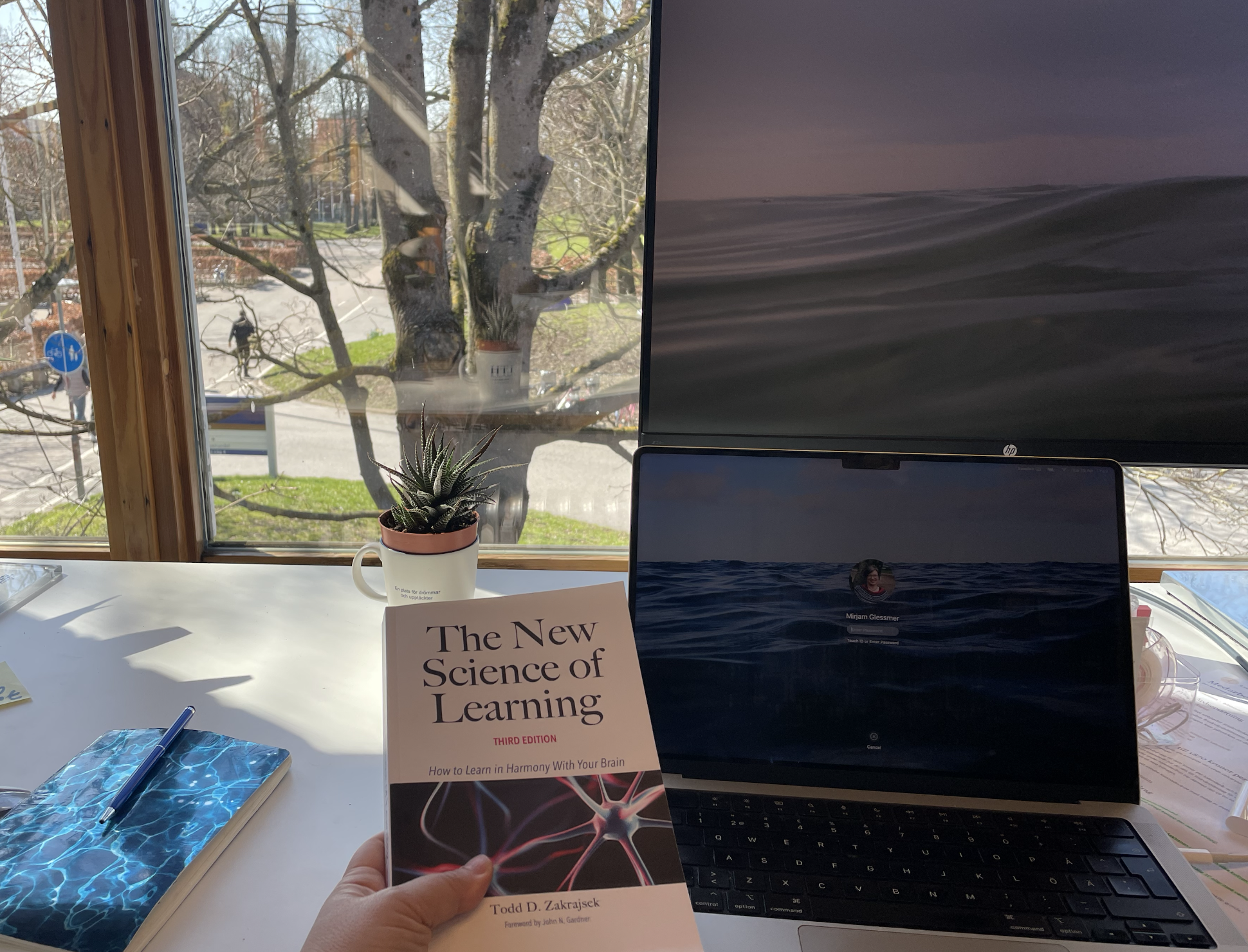
Recommended reading: “The New Science of Learning: How to Learn in Harmony with Your Brain” by Zakrajsek (2022)
I found a new YOU HAVE TO READ THIS BOOK!!!-book: “The New Science of Learning: How to Learn in Harmony with Your Brain” by Zakrajsek (2022). It is aimed at students and it might be the most important thing students ever read in school…
…as John N. Gardner says in the foreword. Yes, that’s right, I read a foreword! And it is so worth reading already, because it provides a framework for how to read the book. Not cover to cover, but strategically — and with suggestion for the strategy, e.g. browsing the table of contents like a menu at a restaurant and deliberately picking a chapter to start from. So therefore I am not going to go through the book chronologically, but see what sparks my interest! First:
Thriving in higher education (Part 3, chapter 7).
Sounds intriguing, doesn’t it?
This chapter’s goal is making the hidden curriculum explicit, for example by explaining how much time students are actually expected to put into a course in addition to the synchronous times, or by giving advice on how to deliberately choose people to study with, and how many you might want to study with for different purposes. Then, Bloom’s taxonomy is introduced as a tool to understand what level the teacher is expecting and what level oneself is succeeding and failing at, and how knowing about Bloom can be used to make a “less than ideal” lecture not a waste of your time.
Study tip 7.3, “The best way to learn anything is to teach it, regardless of student: a person, plant, dog, or wall”, reminds me of a story I heard about a friend’s husband’s boss, who said you could ask them any question you like, as long as you make sure you have asked a stuffed teddy before and that hadn’t helped. Which I absolutely love: articulating a question (not just repeating a question from the exercise sheet, but articulating what it actually is that is troublesome about it) is usually a big step towards solving it already. And of course, the same goes for teaching: If you are telling your plant about what you just learned, that requires articulating things and makes it a lot more difficult to gloss over gaps without becoming aware of it.
Then, there is a section on cheating and plagiarism, and it is explicitly not about how wrong that would be, but clear explanations of what constitutes as cheating / plagiarism, so you don’t accidentally do something that then turns out to have been one of those. And this is where I wandered back to the menu to end up in the next spot…
Demonstrating your learning (Part 3, chapter 8)
What I really like here is that the part on participation explains many of the reasons why individuals might choose not to talk in class. It might be due to your personality, but it might also be because you belong to one (or several) groups that have to fight against biases and discrimination in various ways, so it might actually be harder for you to speak up, and everybody needs to be aware of biases and try to mitigate them for themselves and others.
Further along in that chapter, different test-taking strategies are discussed, for example how to deal with feelings of anxiety, i.e. reframing them as helpful for performance.
Back to the menu…
Sleeping to enhance learning (Part 4, chapter 10)
This chapter gives an introduction to sleep cycles, stages of sleep, sleep pattern, and how to manage them to improve memory and learning. Really interesting and relevant!
Looking through the menu, there are so many other chapters that I want to read!
Exploring social influences (Part 2, chapter 5)
This chapter starts with mindsets and how to develop your own towards growth-minded. Then, it dips into metacognition — becoming aware of our own thoughts, and steering them productively. Then attribution — do we look for reasons for success and failures inside ourselves or in the world outside and out of our control? And lastly, egocentric bias; how do we perceive ourselves in relation to others, and how do we remember our role in events depending on their outcome?
I would go back to the menu now, except I have a meeting soon and I think I can already give a “verdict” on this book: I think you should read it! Or at least browse it. I can see how it would be SUPER helpful for students that have never thought about their learning explicitly before, and I like that it is so full of practical relevance while being grounded in research (lots of references), and that it actually includes discussion questions plus the very helpful strategy advice in the foreword. So go and read it! :-) (Or at least blog post 2 on the topic)
Zakrajsek, T. D. (2022). The New Science of Learning: How to Learn in Harmony with Your Brain. Stylus Publishing, LLC.
Recommended reading: “The New Science of Learning: How to Learn in Harmony with Your Brain” by Zakrajsek (2022) (Part 2) - Adventures in Oceanography and Teaching says:
[…] I’m back to browsing the “menu” in my new favorite book, “The New Science of Learning: How to Learn in Harmony with Your Brain” by Zakrajsek (2022). If you haven’t read the first blog post about the book, you might want to read that one first for context. […]